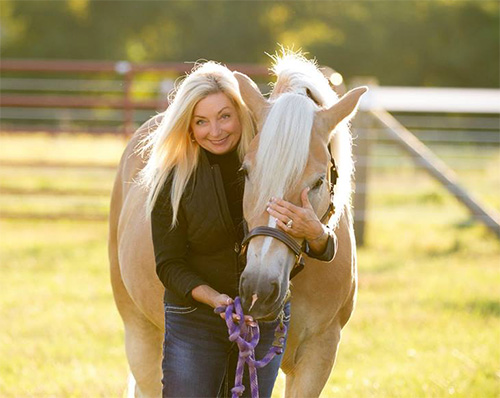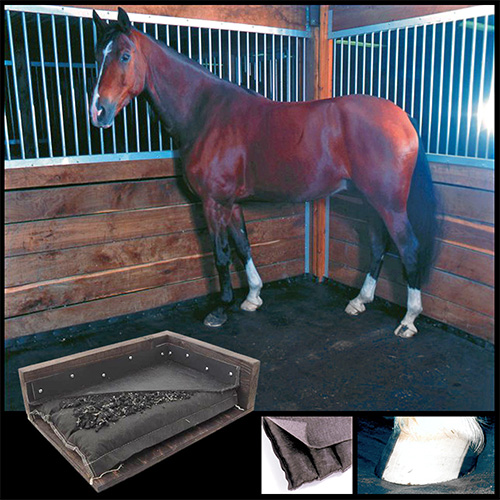|
7-Tips to Protect Your Horse’s Joints
 |
Article by Karen Elizabeth Baril
If only we lived in a perfect world. Our horses would enjoy good health throughout their lives. Unfortunately, that’s just not the world
we live in. My own Haflinger gelding suffers from an arthritic knee. He was born with poor conformation and over the years, it’s taken its toll on him.
Horses boast three different types of joints; there’s the cartilaginous joints which are connected by cartilage, like those found in the
spinal column. These joints may move, but only in a limited way. Fibrous joints are fixed, but join large bones like those found in the
plates of the skull. Finally, the one we’re most familiar with, the synovial joint, is a joint that offers the widest range of motion.
Synovial joints come in several unique designs, including the ball and socket found at the hip and femur junction, hinge joints like those
found in the elbow or knee, and the pivot or rotary joint like the one that allows your horse’s head to move from side to side and up
and down. Synovial joints are the most prone to injury because of their range of motion and the amount of work that’s asked of them.
There are several preventative measures you can take to keep his joints healthy.
1. Keep him moving. You’ve heard the adage, “use it or lose it.” That should be our mantra in protecting our horse’s joint health.
Why? Think of your horse’s body as a giant vessel of fluid. In fact, he’s literally saturated with fluid. The fluid in his blood is blood
plasma, but when it enters surrounding tissues and cartilage, it’s known as interstitial fluid. It’s this fluid that carries nutrients into your
horse’s deepest tissues, including joint cartilage. Your horse’s cartilage is like a sponge, absorbing new nutrients as needed and
squeezing out the old so that additional nutrients can be absorbed. Movement allows the cartilage to absorb these nutrients. This is
why my Haflinger gelding with the arthritic knee comes out of his stall a little stiff, but goes back in feeling pretty good.
2. Tweak his diet. We always start with nutrition; it’s the foundation everything else relies on. Free access to high quality forage is a
great start. What is high quality forage? For us, it’s a good timothy/brome grass mix. We don’t feed alfalfa because we have founder
prone types, but a small amount of alfalfa in your program could be beneficial, depending on your horse’s nutritional needs. Alfalfa
boasts a much higher percentage of protein, minerals, and calcium than grass hay which can upset the balance of your horse’s biochemistry. Consult your nutritionist before feeding.
Limit processed grains if you feed them at all. Studies show that horses fed high carbohydrate diets have a higher incidence of bone
problems like Osteochondritis Dissecans (OCD). Most horses fare well on a simple diet of high quality forage, free choice minerals
(that include micro and macro nutrients), a good pre and probiotic, with a quality vitamin supplement. And, of course, provide him access to a salt block and plenty of fresh water.
3. Exercise is a great preventative in moderation. Just like us, our horses need adequate preparation for the athletic maneuvers we ask
of them. Remember to work your horse on footing that fits the job. A reining horse will work on a looser footing than a carriage horse
or a barrel racer. Be sure to use appropriate leg protection to protect your horse from injury. Provide ample warm-up and cool down periods.
4. Therapeutic body work is an important ingredient in any joint care program. Check out the benefits of massage, chiropractic care, and gentle stretching.
5. Check his teeth. While we don’t often associate dentistry with joint health, new information tells us we should. The TMJ
(temporomandibular joint), located where the cranium (or jaw) meets the temporal bone, is known as a bicondylar joint or one that
boasts a meniscus between the articular surfaces, just like in your knee.
The meniscus is a crescent shaped structure composed of fibrous and cartilaginous tissue. It’s job is to disperse weight and reduce
friction between joints. In the TMJ, the meniscus reduces friction between the joints of the head and jaw while your horse chews,
whinnies, travels on the bit, or simply yawns. If the TMJ is misaligned, the SI (sacroiliac joint) might suffer as well. In the human, this would be the equivalent of lower back pain.
6. Consider supplements. Glucosamine and chondroitin are the front runners, but there are others. Check out MSM,
methylsulfonylmethane (a chemical compound that is believed to support joint health), and hyaluronic acid. Hyaluronic acid (HA)
occurs naturally in the equine joint so the theory is that fed in supplement form, HA can improve joint function by helping to lubricate
the joints. HA can also be administered in an intravenous or intra-articular form.
 |
7. Provide a comfortable place to rest. Researchers know that equine sleep deprivation is the leading cause of joint pain. A good
night’s sleep is truly the best medicine. If you’ve ever spent a night on a lumpy mattress, you know how important it is to a good
night’s sleep. Investing in a stall mattress can literally change your horse’s life. Studies show that horses stalled on mattresses lie down for longer periods and stay down for longer durations.
|